03 August – 29 August 2020
Fonteta
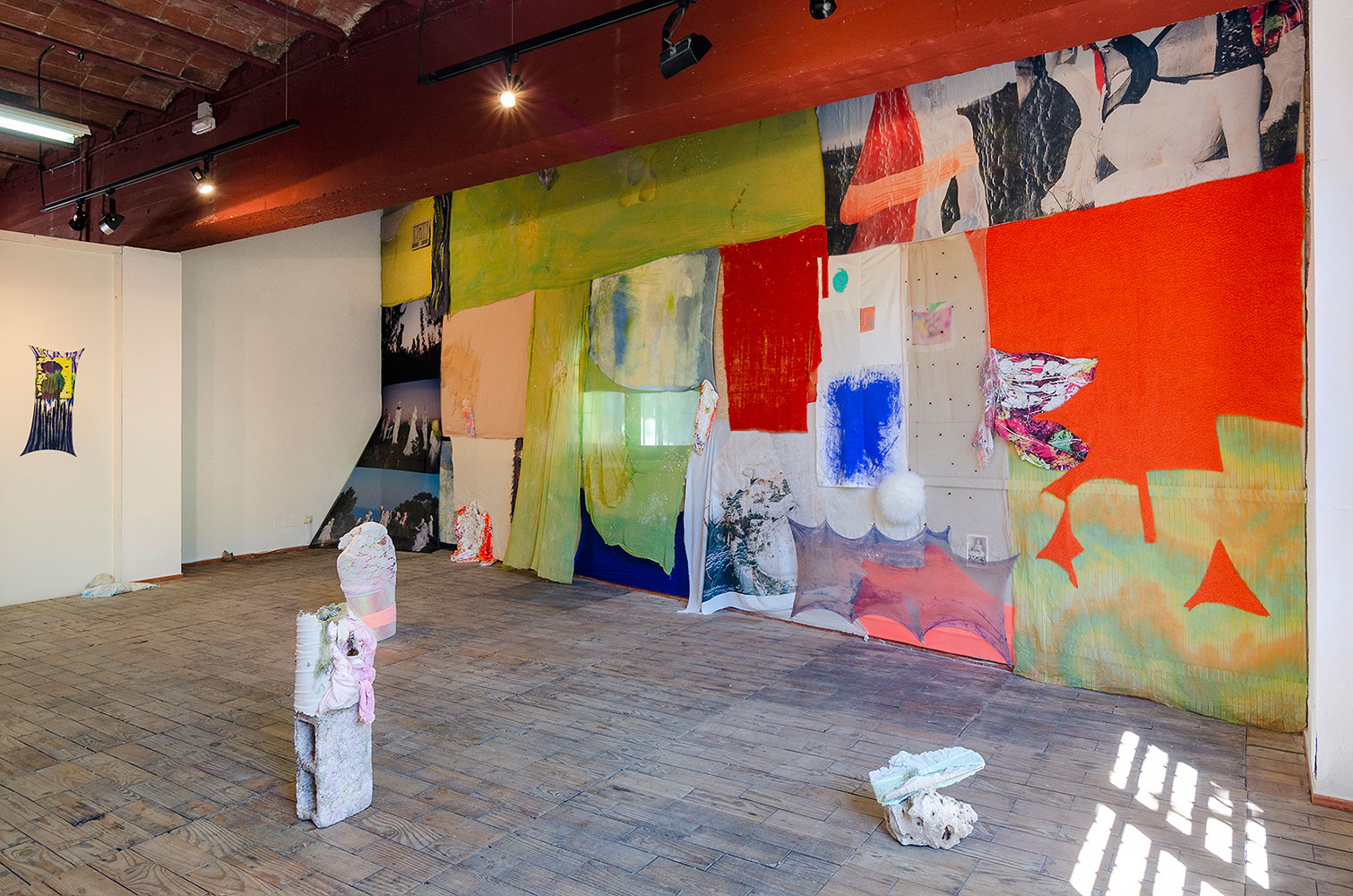
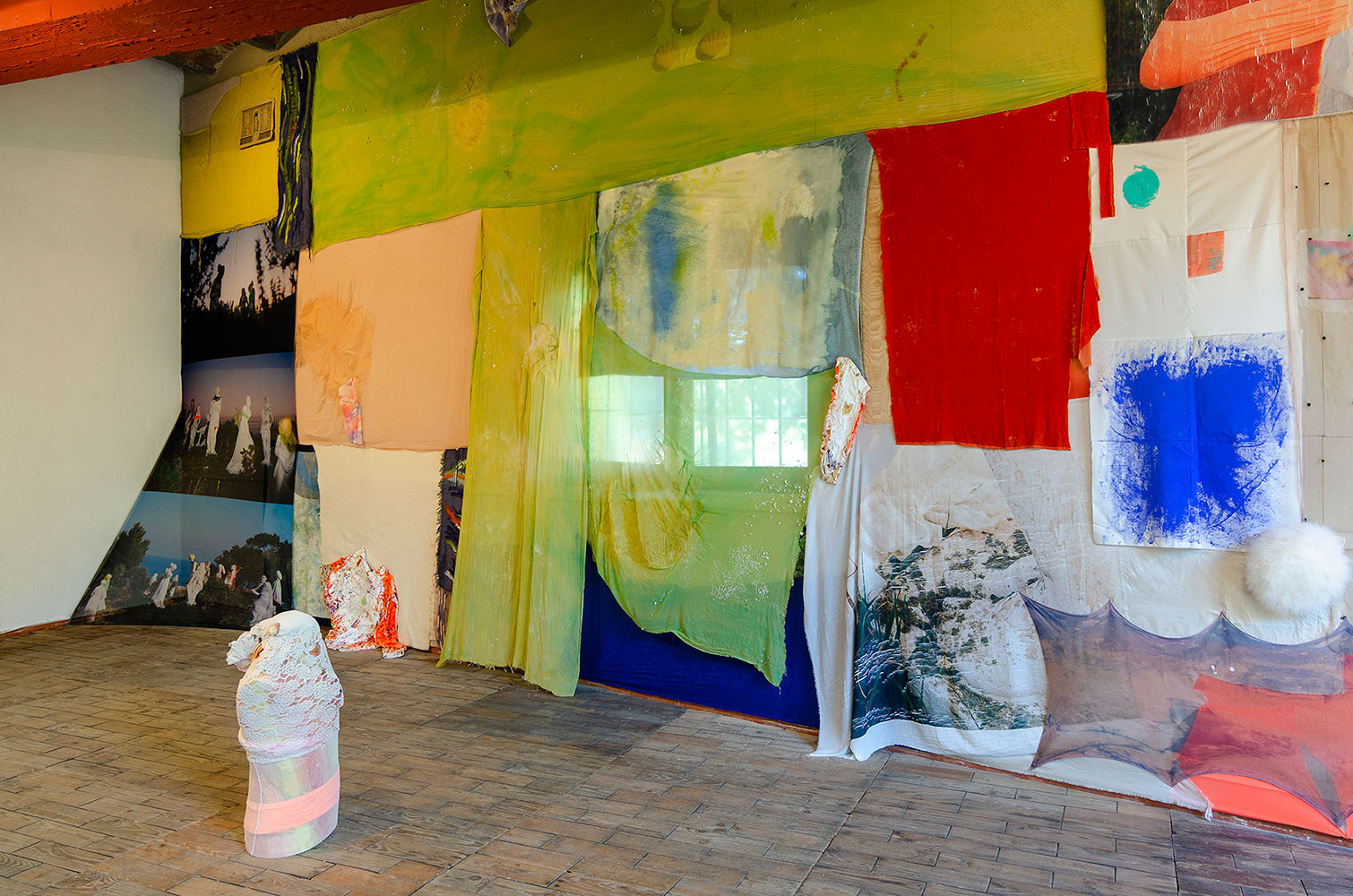

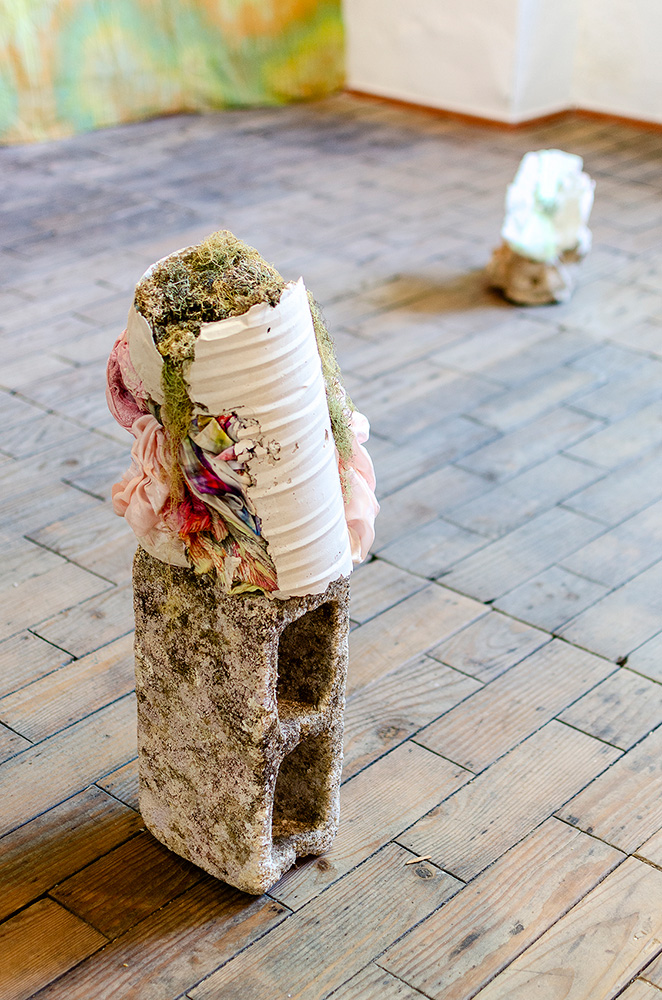
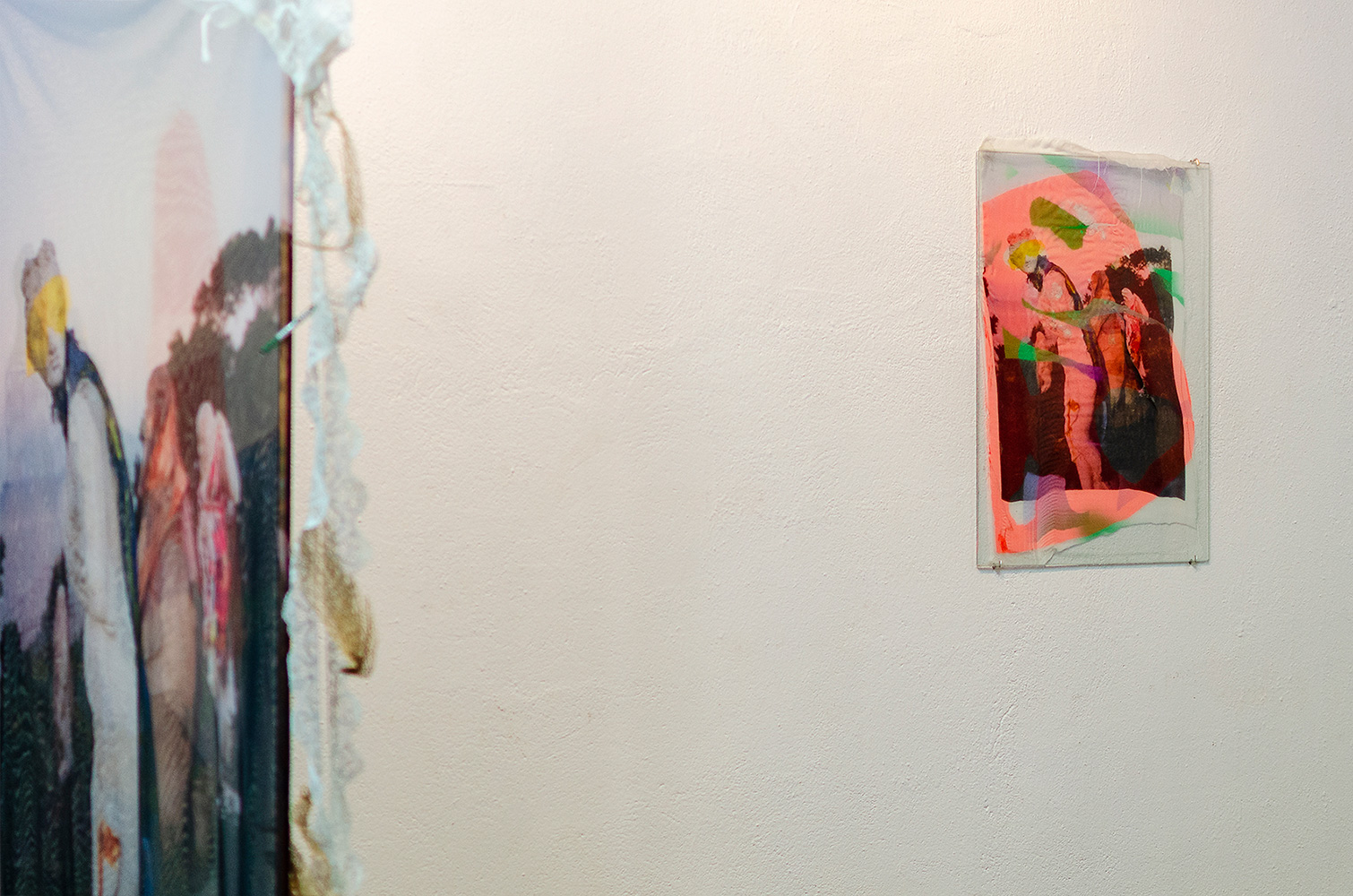
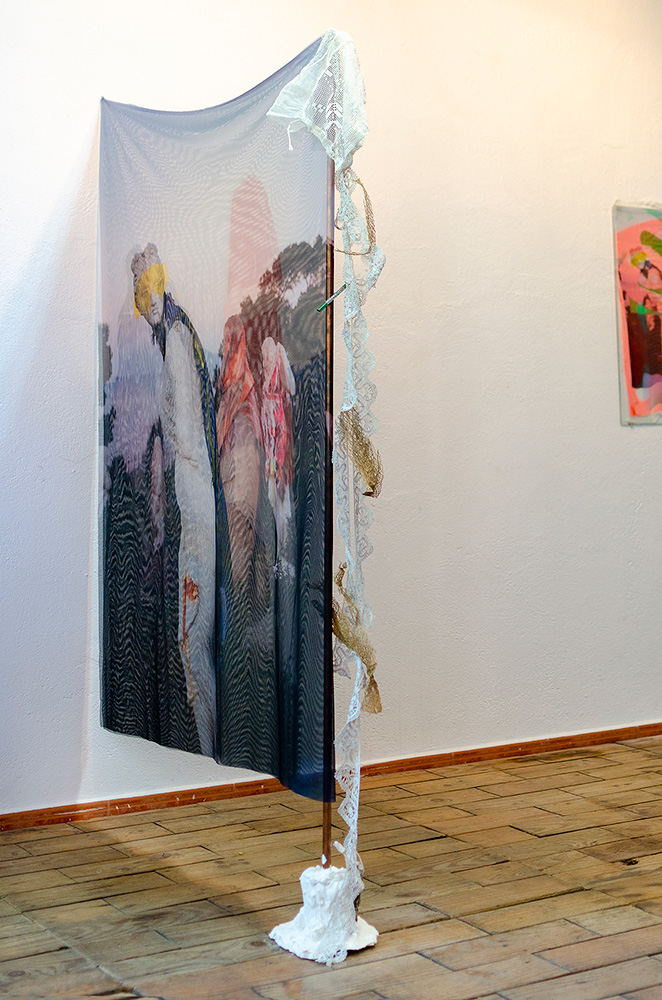

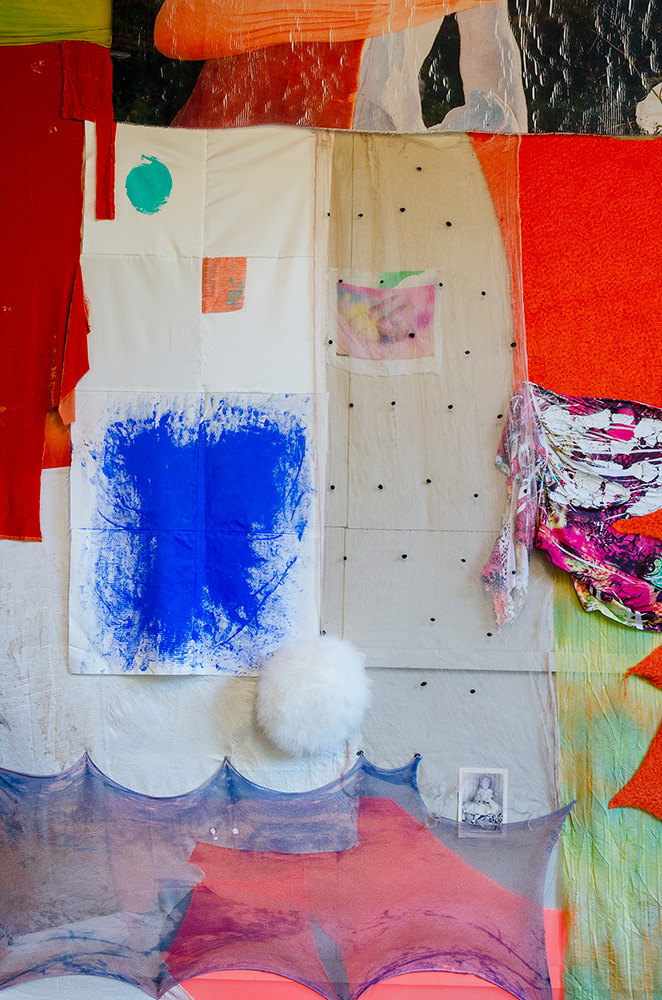
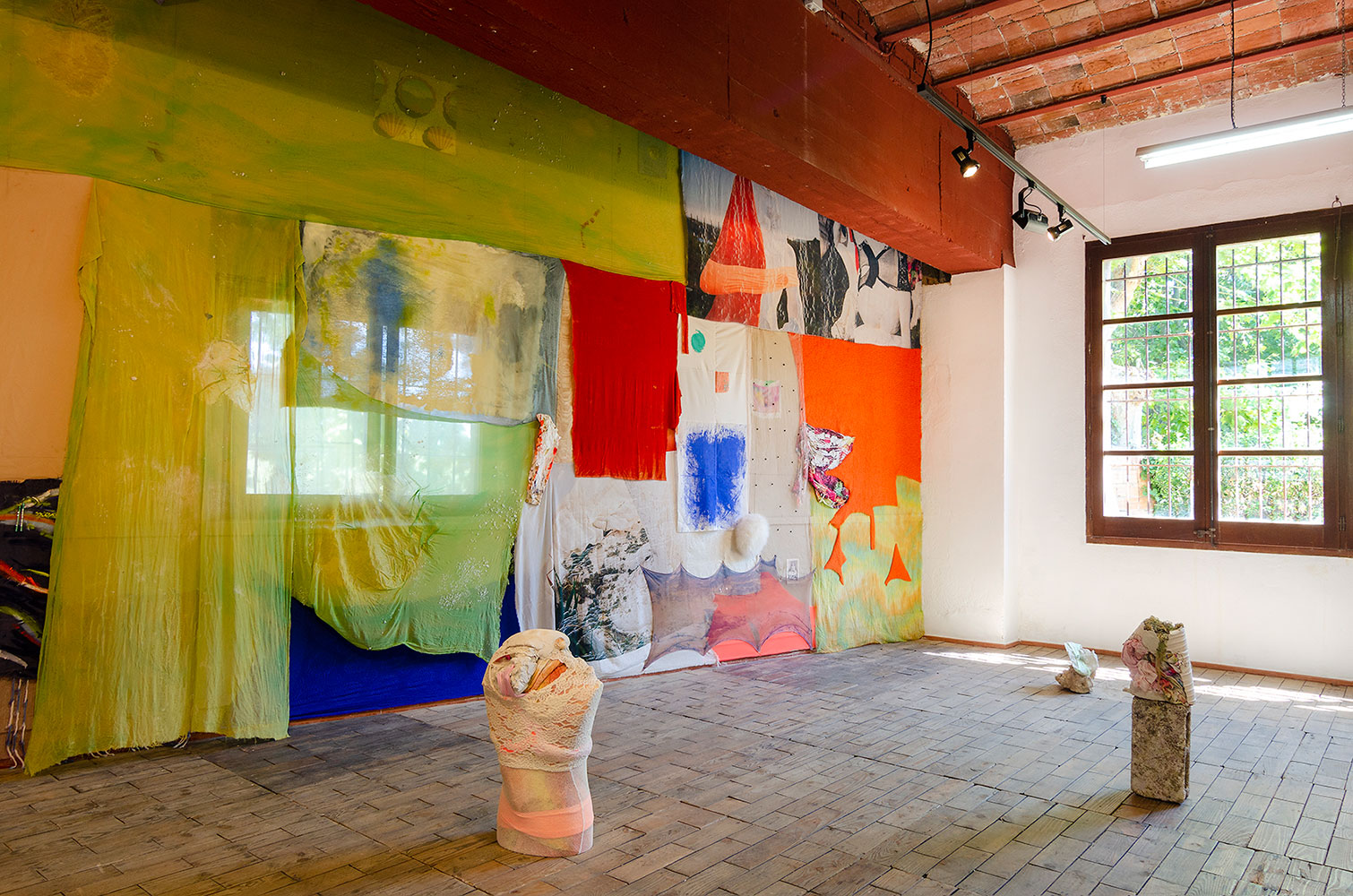
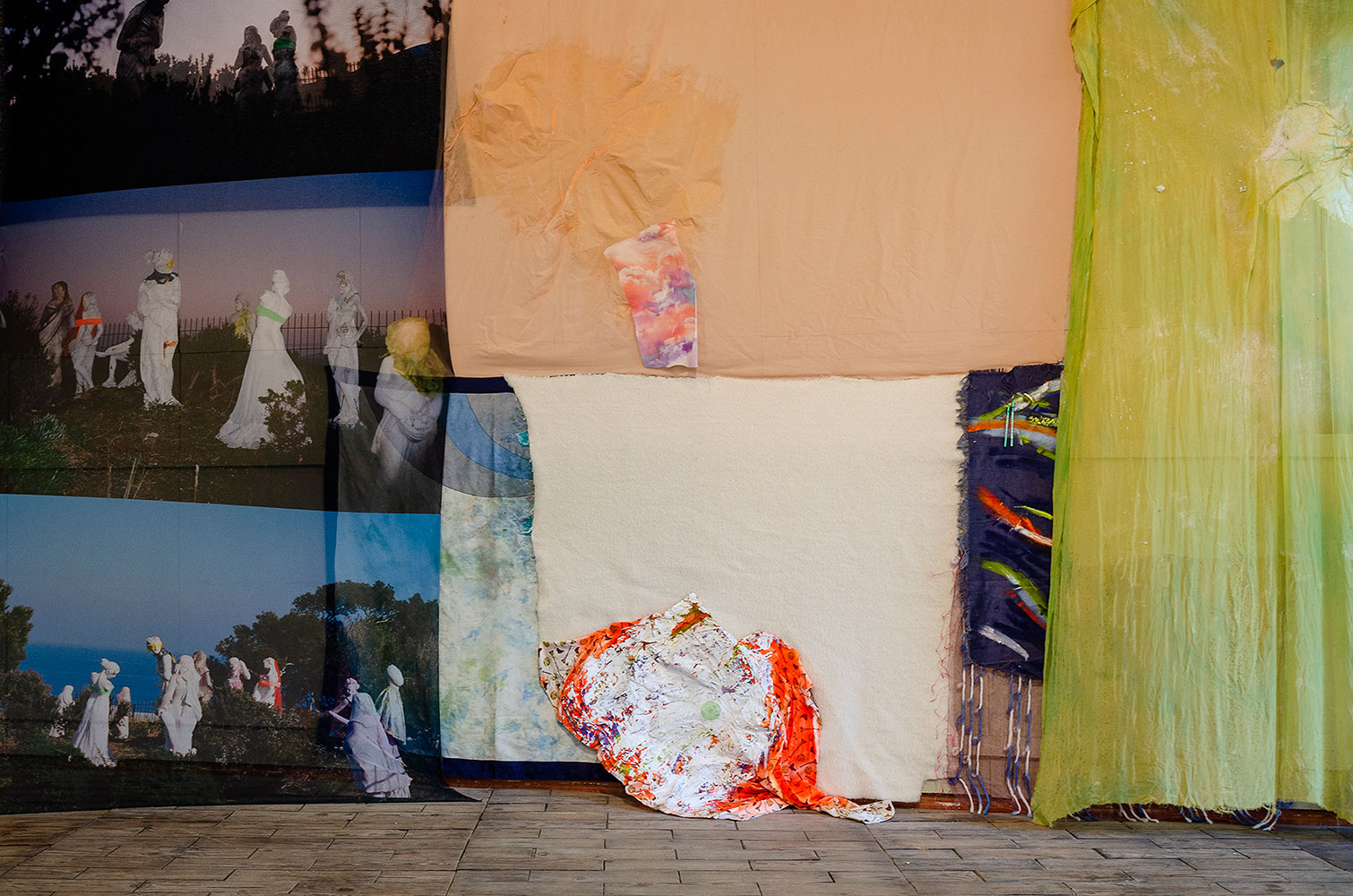
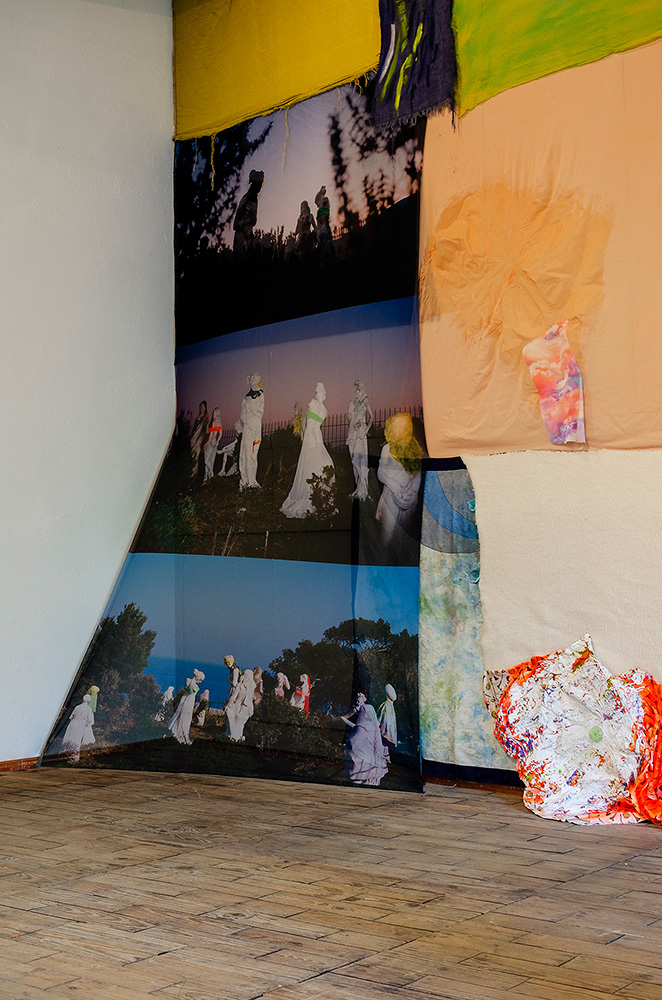
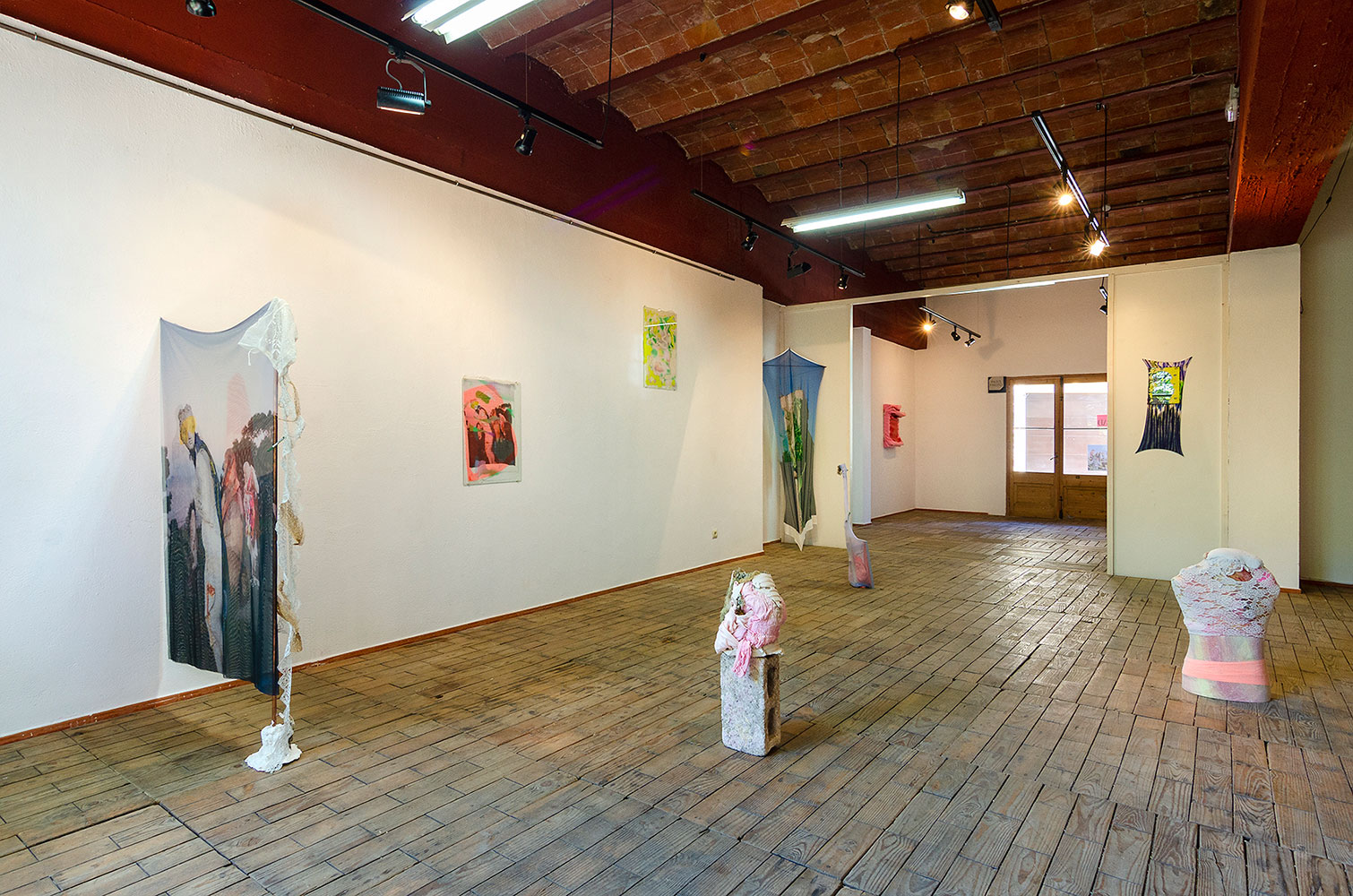
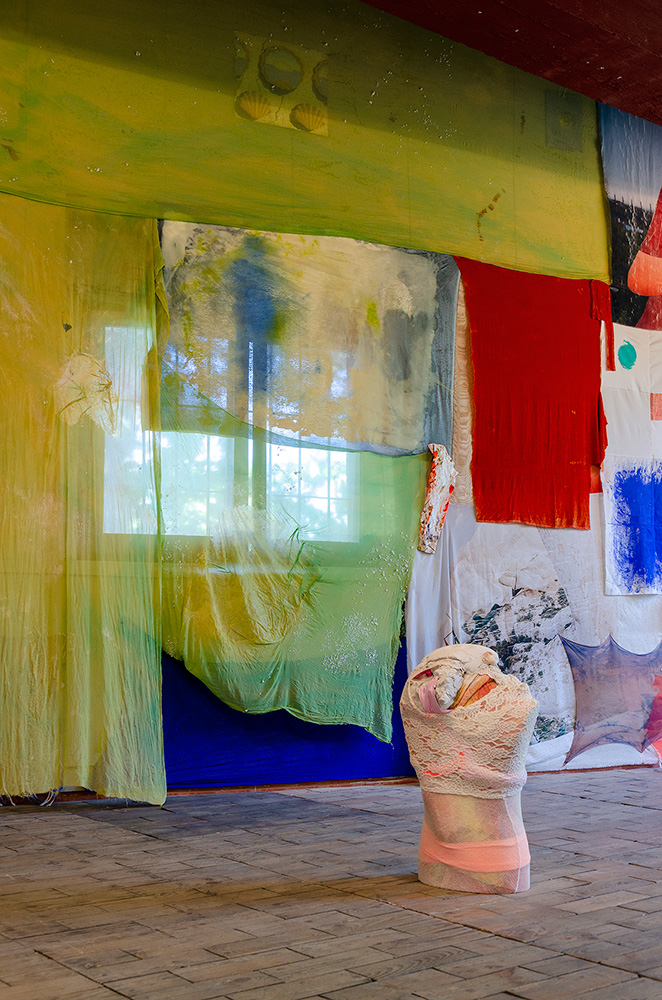
know more about
In August Bombon moves to Fonteta, a town in the Baix Empordà to present the exhibition Les Anémones by Rosat Tharrats.
Les Anémonas is part of a collaboration that Rosa Tharrats and Lluis Tudela carried out in February 2019 at Cap de Creus, where Tharrats made an installation that Lluís Tudela photographed. Now, these photographs are distorted and grafted onto a large collective tapestry or reinterpreted through sculptures that, like membranes, connect some works with others and generate perimeter units of meaning (visual, atmospheric, sensory). An installation in which the document (Lluís Tudela’s photography) becomes the body and prosthesis of the work, and vice versa.
VISCOUS TIMES
Text by Gabriel Ventura
Sea anemones can have more than three hundred tentacles and, although visually they look like a plant, they are actually animals. They are part of the class Anthozoa, a Greek term meaning “flower animal”. So far, more than 1,200 species have been cataloged, with all kinds of morphologies and colorations. There are some that look like towels or rugs, others are reminiscent of a mushroom with antennae or a palm tree. One of the most fascinating features of anemones is their feeding system.
Although these animals can be predators and feed on small crabs and molluscs that they hunt thanks to their stinging tentacles, which stun and paralyze prey, they usually live in symbiosis with unicellular algae. During the process of photosynthesis, the algae expel oxygen and sugars that the anemones take advantage of as nutrients. Another form of collaboration that anemones have found is hosting some species of fish and carideos (prawns). In exchange for the protection afforded by the stinging tentacles (which, while encircling the host, inhibit venom secretion), the fish clean the animal’s oral disc and tentacles by their movements. This collaborative strategy, which biologists call symbiotic mutualism, fits perfectly with the operation of the installation that Rosa Tharrats created in Cap de Creus in February 2019 and that we now see transplanted to Bombon Projects, in a split full of tensions, transparencies and balances that refer to that first material ecosystem.
Donna Haraway says that the ecosystems of the future will have to be open, mundane, indeterminate and multi-temporal (a utopia she has named Chthulucene). Rosa Tharrats’ works are always provisional and are inserted into an organic logic that goes beyond the univocal existence of the closed work itself. Tissues are constantly displaced and reused. An intervened jacket with paint that until recently served as a more or less conventional piece of clothing suddenly becomes a binder that joins and repairs a disused lamp. The unexpected alliance of the jacket with this other material generates a new plastic creature and modifies the previous functions of the objects. But works are never stable. It may happen that, after a few months, a sleeve of this same jacket ends up serving as a pedestal for another sculpture or as a fragment of an installation. Copulations that occur not only between different kinds of “inert” matter but also between industrial materials and lichens, between plastics found on the seabed and algae, etc.
Lluís Tudela’s photographs —succulent and raw like a flower— are distorted and inserted into a large collective tapestry or are reinterpreted through sculptures that, like membranes, join some works with others and generate perimeter units of meaning (visual , atmospheric, sensory). In an ecosystem there are also textures, and transition spaces are as important as the organisms that populate them. The working method that Tharrats established during the production of the installation —carried out between February 13 and 21, 2019— seems to follow the tactics of symbiotic mutualism. An installation in which the document (Lluís Tudela’s photography) becomes the body and prosthesis of the work, and vice versa, in which the work sometimes becomes an altered shadow, the Doppelgänger of an experience that escapes into the time and space, like when William S. Burroughs, with the intention of narrating a trip to Peru in search of ayahuasca (with supposed telepathic powers), ends up writing a totally delirious story-report, in the interzone between fiction and reality. What is Queer? A realistic novel or a hallucinated chronicle? Sculptures and works on glass that try to escape their status as solid substances, that are not capable of supporting their materiality, that in the tension of evasion make their lushness even more evident, their desire to expand, spread and concentrate, to expel , of growing and touching (“tentacle” comes from the Latin “tentaculum”, which means “antenna”, and from “tentare”, “feel”, “try”). Works like Fluor Dawn, Balança or Intruder explore this indeterminacy of limits, one of the conditions of the Chthulucene.
he plurality of times to which Haraway alludes is another of the characteristics of this sticky and transforming installation, and it becomes effective through the accumulation of layers impregnated with different temporalities exposed simultaneously. A one and a half meter orange velvet fabric, which had dressed one of the sculptures during the 2019 installation, is repeated, this time in its corporeal version (not mediated by the photographs printed on silk), in the large fabric mural that the artist makes in situ in the Fonteta space. The copy and the original are allied —and this is a key word: alliance— in a spectral gesture that strikes down the mythical story of the origin. One could say that the old conflict between the copy and the original is a rotten problem, a problem on which a whole humus of new coalitions and hostilities has blossomed.
Tharrats produces a tapestry (Hydrobiota) from detritus and remains of other works, each one with a particular history, which are added to this sea in perpetual agitation and reproduction. Some of the currents of this ocean come from other works, from other lakes and rivers, and will continue to flow into new segments of the sea. In this sense, Les Anemones are mutating, aquatic and synchronous, they are always beginning in a new association of material assemblages. Researcher M. Beth Dempster suggests the term sympoeisis for “collectively produced systems that have no self-defined spatial or temporal boundaries. Information and control are distributed among the components. Systems are evolutionary and have the potential for surprising changes.” A powerful element of impregnation intervenes in the configuration of Les Anemones. A stock silk that coexisted with the salt and the sun’s rays from some mines in Puglia, in Santa Margherita di Savoia (Italy), is combined with a scarf found in the streets of the Kreuzberg neighborhood (Berlin) and bathed in the waters of the bay of Cadaqués. And it is that, as Donna Haraway affirms: «no one lives everywhere; we all live somewhere” and “nothing is connected to everything; everything is connected to something.” Times and places leave traces on matter (Derrida). The artist combines and articulates these traces, to which she adds her own emanations.
Basically, Les anemones refers above all to the question of contact and communication between species of materials. What happens when two materials come into contact? How they relate? What kind of human and non-human hierarchies are established? Do they radiate ideas, stories, vibrations? Do they affect us? Can they affect us? How? Viscous questions for viscous times.
Gabriel Ventura
Read More